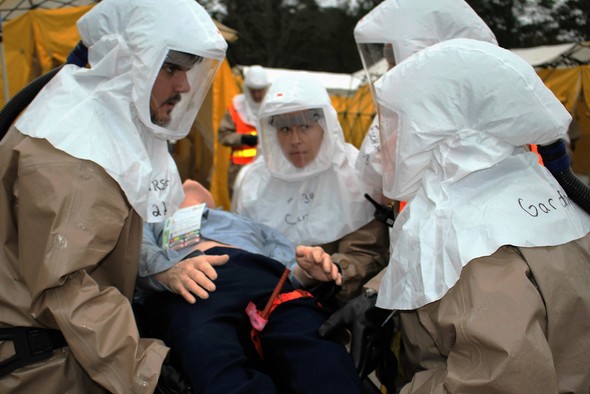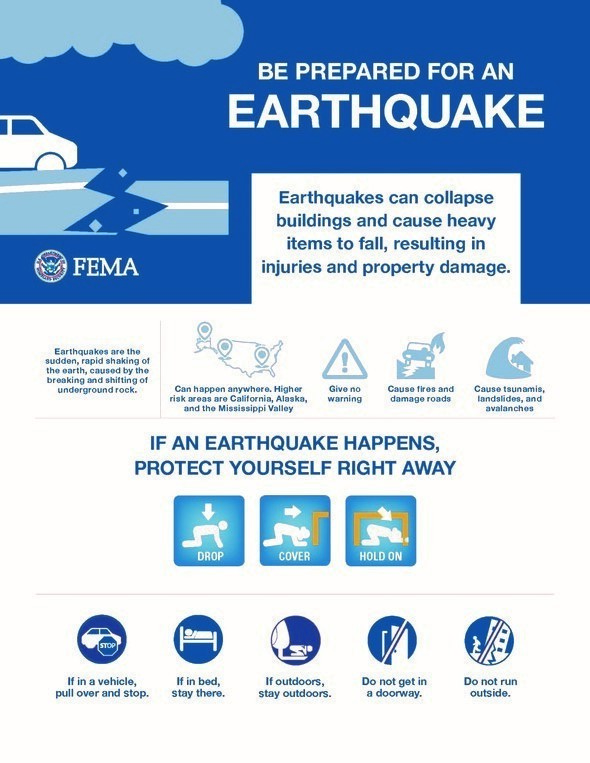|
Today, FEMA announced the agency will start accepting applicants for the Youth Preparedness Council. This program brings teens together from across the country who are interested and engaged in community preparedness. Council members are selected based on their dedication to public service, their efforts in making a difference in their communities and their potential to expand their impact as national leaders for emergency preparedness. Students in 8th through 11th grade are eligible to apply.
Formed in 2012, the Youth Preparedness Council offers opportunity for youth leaders to serve on a distinguished national council and participate in the Youth Preparedness Council Summit in Washington, D.C. During their two-year term, the youth leaders will complete both a local and national-level project and share their ideas regarding youth disaster preparedness with FEMA leadership and national organizations.
Youth interested in applying to the Council must submit a completed application form, provide two letters of recommendation, and academic records. All applications and supporting materials must be received no later than 11:59 p.m. PST, March 31. New council members will be announced in May.
To access the application materials, read about the current Council members, and for more general information about the Youth Preparedness Council visit www.ready.gov/youth-preparedness-council.
The National Advisory Council (NAC) Integrated Public Alert and Warning System (IPAWS) Subcommittee released, Modernizing the Nation’s Public Alert and Warning System. The report provides recommendations to build a more robust and responsive integrated public alert and warning system with the goal of improving the reach and reliability of IPAWS for the benefit of all.
The subcommittee was mandated by the IPAWS Modernization Act of 2015 (Public Law 114-143) to develop recommendations to the NAC for improving the integrated public alert and warning system. The work of the subcommittee represents a collaborative effort at all levels of government, including seven federal agencies, private-sector leads, subject-matter experts, and representatives with access and functional needs.
Between its inaugural meeting in August 2017 and the production of this report in October 2018, the 45-member subcommittee received 77 presentations from SMEs representing all parts of the alert and warning community.
The report consists of 14 critical recommendations on common alert and warning protocols, standards, technology, and operating procedures.
The final subcommittee report can be accessed on FEMA’s National Advisory Council website: https://www.fema.gov/recommendations-and-reports.
Friday, FEMA Press Secretary Lizzie Litzow released the following statement from Administrator Brock Long:
“The Administrator applauds the President’s intent to nominate Mr. Jeffrey Byard as FEMA Administrator. Mr. Byard, Associate Administrator for the Office of Response and Recovery at FEMA, is an exceptional team member and will carry out the Agency’s mission of helping people before, during and after disasters, as he has skillfully done for the past two hurricane seasons. During the confirmation process, Mr. Byard will continue to serve in this capacity as Associate Administrator as we prepare for the 2019 hurricane season.”
Approximately 120 healthcare and law enforcement specialists responded to various simulated incidents on February 15 in the first Integrated Capstone Event of 2019 at the FEMA’s Center for Domestic Preparedness (CDP) in Anniston, Ala.
Integrated Capstone Events (ICE) are full scale exercises at the end of a training week where students from multiple courses and disciplines work together to respond to one or more incidents patterned after recent real-world events. CDP partnered with the Federal Law Enforcement Training Center on this exercise.
The students attended CDP “Healthcare Leadership for Mass Casualty Incidents and Hospital Emergency Response Training for Mass Casualty Incidents” courses, and the FLETC “Active Shooter Threat Training Program” course. In the exercise, students responded to various simulated incidents – including bomb detonations, active shooters, environmental hazards and mass casualties – in and around the CDP’s Advanced Responder Training Complex, Noble Training Facility and Dorm area.
In an average year, CDP conducts two to three collaborative ICEs in conjunction with its training partners and about 25 ICEs overall on its campus.

Medical responders discuss decontaminating a patient who has been “exposed” to chemical agents during the Center for Domestic Preparedness’ first Integrated Capstone Event of 2019
 |